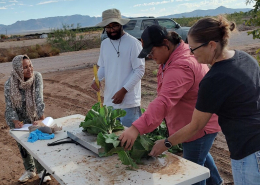
New Mexico’s Chile Crop Is Hot on Agrivoltaics
New Mexico has tremendous potential in solar energy production thanks to its consistently sunny weather and high levels of solar irradiance. Presently, the state's solar market holds a value of $3.2 billion with significant room for expansion. As stakeholders express increasing interest, they are discovering a trend observed in several other states: some of the most favorable locations for extensive solar developments are within agricultural production fields. The concept of integrating photovoltaic (PV) panels into these fields, known as agrivoltaics, has gathered attention and investment.
Case Study: University of Delaware Agrisolar Research
As we strive for climate change solutions, competition over land for food production or clean energy production is an emerging challenge to address this challenge, demonstrations of systems that produce energy and food on the same land are…

Case Study: Hawai’i Agriculture Research Center
Crops growing under solar panels at the Hawai’i Agriculture Research Center.
By Anna Richmond-Mueller, NCAT Energy Analyst
In Mililani, Hawai’i, a one-acre agrivoltaic research and development site run by the Hawai’i…
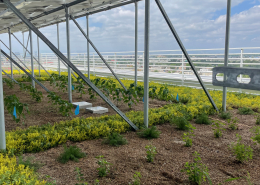
Case Study: Colorado State University Rooftop Agrivoltaics
A variety of chile pepper plants grow under solar panels on the roof of Colorado State University Spur campus.
Written for the AgriSolar Clearinghouse by Allison Jackson, Colorado Agrivoltaic Learning Center
Sitting atop the brand-new…
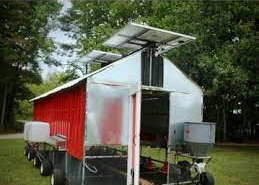
Chiktopia: Solar Grazing with Automated Chicken Coops
By Allen Puckett, NCAT Technical Writer
August 2023
In Ballground, Georgia, Jeffrey Whitmire and Chris Ayers, owners and operators of Chiktopia, are making use of an innovative solar technology that allows them to automate…
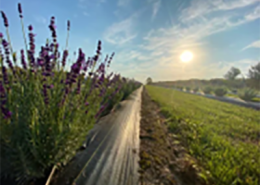
Battlefield Lavender Farm: Solar Powered Processing
By Chris Lent, NCAT Agriculture Specialist
The concept of agrisolar—the use of land for solar electric and agricultural production—is becoming a popular idea. It captivates the imagination to think of the many ways we can use a limited land base to produce...
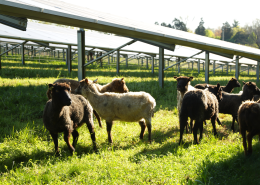
Shaker Village of Pleasant Hill Solar Grazing in Kentucky
By Allen Puckett, NCAT Technical Writer
In Harrodsburg, Kentucky, a flock of sheep is successfully grazing on a solar array at the E.W. Brown Farm, thanks to a collaboration between Shaker Village of Pleasant Hill and LG&E. This operation…
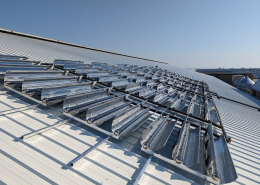
Case Study: Winston Cone Optics and Dairy Processing
Winston Cone Optics’ installed pilot system on the roof of a dairy barn in California.
By Anna Richmond-Mueller, NCAT Energy Analyst
Thanks to the increase of solar photovoltaic sites in recent years, agrivoltaics has started to…
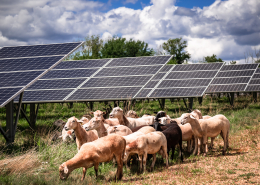
Solar Shepherd in Massachusetts: Solar Grazing
By Allen Puckett, NCAT Technical Writer
July 2023
The Solar Shepherd provides grazing services in Brookfield, Massachusetts, with 75 sheep that graze a solar array site owned by SWEB Development, a European clean energy firm.…
 Wikimedia
WikimediaMaces Pond: Agrisolar Wild Blueberries
By Chris Lent, NCAT Agriculture Specialist
Not far from the town of Rockport, Maine, Paul Sweetland of Sweetland Farms, LLC has been tending wild blueberries since he was a young boy. On one field that he has been farming since the late 1990s,…
